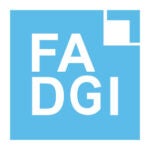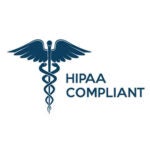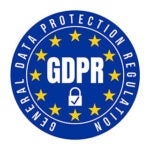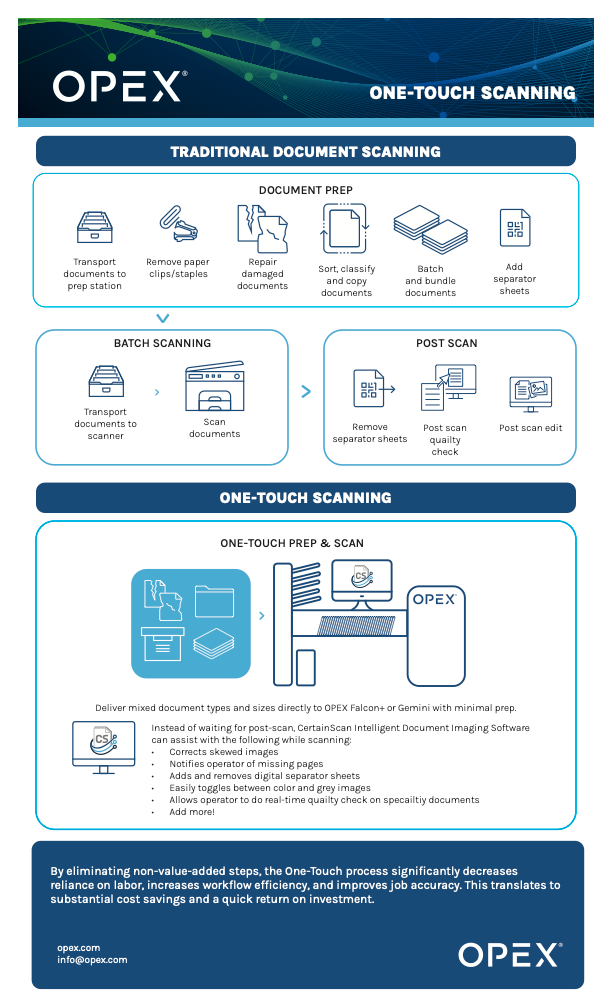Built for Compliance: How Modern Scanning Systems Deliver Operational Excellence
10 min read
60-Second Summary
Modern scanning systems transform regulatory compliance from an operational burden into a competitive advantage for BPOs and service bureaus. OPEX solutions, such as Falcon®, Falcon®+ RED™, and Gemini®, embed FADGI, HIPAA, and GDPR compliance into automated workflows, reducing manual errors while creating audit-ready processes. Real-world implementations have demonstrated 30% efficiency gains and 66% reductions in labor costs. One-touch scanning minimizes document handling, strengthens security, and positions organizations for AI-driven document processing while maintaining client trust and regulatory compliance.
Introduction
Why Compliance is Now a Business Imperative
In today’s document-driven business environment, compliance has evolved from a regulatory checkbox to a competitive advantage. For BPOs and service bureaus managing sensitive records across healthcare, legal, government, and financial sectors, the stakes have never been higher. A single compliance failure can result in hefty penalties, damaged client relationships, and lost contracts.
The challenge lies not just in meeting regulatory requirements, but in doing so while maintaining operational efficiency and cost-effectiveness. Organizations must navigate complex standards, such as FADGI, HIPAA, and GDPR, while processing millions of documents under tight deadlines. Traditional scanning approaches, with their manual processes and multiple touchpoints, create unnecessary risk and inefficiency.
Modern scanning systems powered by intelligent automation offer a different path forward. These solutions embed compliance into the workflow itself, transforming regulatory requirements from operational burdens into competitive strengths. By combining high-quality image capture with built-in security controls and audit trails, organizations can achieve both compliance and operational excellence.

Chapter 1
The Digital Vault: Securing Sensitive Data from Intake to Archive
Document security begins the moment a physical record enters your facility. Traditional workflows expose sensitive information to multiple risks: theft during transport, human error in manual sorting, physical damage from mishandling, and the absence of audit trails during regulatory reviews.
Paper documents create inherent vulnerabilities. Even well-intentioned teams using conventional scanners face extensive manual preparation requirements. Removing staples, taping tears, and categorizing batches creates multiple opportunities for breach or misplacement. Each additional touchpoint compounds the risk.
Modern scanning platforms eliminate these vulnerabilities by creating a secure, auditable chain of custody. Systems like the Falcon+, Falcon+ RED, and Gemini combine real-time image capture, automated classification, and metadata creation into a single, controlled workflow. From the moment an envelope enters the scanner until a digitized file reaches your content management system, every step is tracked, validated, and controlled.
The security measures built into these systems address real-world risks:
- Automated audit trails log operator ID, scan time and date, image validation results, and any exceptions or overrides
- User authentication and role-based access controls ensure only authorized personnel can access settings and features
- Multi-layer detection technologies flag anomalies like stuck pages, hidden documents, or mismatches in real time
- On-site scanning capabilities allow sensitive records to be digitized without leaving secure premises
These capabilities proved essential for Tectel SA when digitizing patient records. The hospital required that sensitive medical files never leave the premises. Using Falcon+ scanners, Tectel established secure on-site digitization workflows that protected patient privacy while unlocking long-term digital transformation initiatives.
Chapter 2
Navigating Compliance: Meeting FADGI, HIPAA, and GDPR Standards
Regulatory compliance requires more than good intentions; it demands systematic approaches that can withstand audit scrutiny. The three major standards affecting document processing each present a unique challenge:

FADGI (Federal Agencies Digital Guidelines Initiative) focuses on image quality and consistency for government records. Three-star rating requirements mandate high-resolution capture, minimal distortion, and precise tonal reproduction. These specifications ensure digitized records meet federal archival standards while supporting long-term accessibility.

HIPAA (Health Insurance Portability and Accountability Act) protects sensitive health information through physical, administrative, and technical safeguards. Covered entities must demonstrate strict controls over how protected health data is collected, processed, and stored throughout the document lifecycle.

GDPR (General Data Protection Regulation) regulates data privacy for EU citizens, requiring organizations to maintain comprehensive controls over personal data collection, storage, and processing. The regulation demands audit trails, access controls, and data minimization practices that traditional scanning workflows struggle to support.
Intelligent scanning systems address these requirements through engineered compliance features:
- Audit-ready workflows provide automated logging and complete audit trails documenting every document interaction
- Secure data capture minimizes exposure by scanning directly from envelopes or folders, eliminating unnecessary handling
- Reduced human error through built-in multi-feed detectors, image verification tools, and automated classification
- Standards compliance with FADGI three-star specifications when properly configured with CertainScan software
The compliance benefits extend beyond regulatory requirements. When Konica Minolta replaced manual preparation processes with FalconV+ scanners, it achieved a 66% labor cost reduction and a 69% prep time reduction, while ensuring that sensitive HR documents were digitized without risk of damage or misplacement.
Chapter 3
Trust and Transparency: Earning Client Confidence Through Secure Workflows
Trust forms the foundation of successful BPO relationships. Clients need assurance that their sensitive information remains secure throughout the document processing lifecycle. Without visibility into document handling processes, accountability becomes impossible, and trust erodes.
Building client confidence requires transparency at every step. Clients must understand who handled their documents, where they were stored, how they were digitized, and when data was accessed. This transparency isn’t achieved through promises; it requires systematic documentation and verifiable audit trails.
OPEX scanning systems deliver this transparency through “One Touch” scanning workflows. Documents move from envelope to digital image in a single, traceable process that provides:
- End-to-end visibility of every document interaction
- Reduced prep errors through automated handling and classification
- Audit-ready logs documenting every action taken during processing
The operational benefits extend beyond security. Iron Mountain Government Solutions deployed over 90 Falcon+ scanners to address a backlog of half a billion requests for WWII-era records. The minimal-prep process reduced labor requirements while increasing throughput by 30%, all while maintaining compliance with federal data handling protocols.
Chapter 4
One-Touch Scanning: Minimizing Prep, Maximizing Control
Traditional scanning workflows require extensive document preparation that increases both cost and risk. Operators must remove staples, repair tears, sort documents by size, and manually index batches. Each preparation step creates opportunities for error, damage, or misplacement.
One-touch scanning eliminates these preparation requirements through intelligent automation. Advanced systems can process a wide range of document types, sizes, and conditions without requiring manual intervention. This capability transforms scanning from a labor-intensive process into an automated workflow that maintains quality while reducing the number of touchpoints.
The technology that enables one-touch scanning includes:
- Ultrasonic multi-feed detection identifies stuck pages and document anomalies
- Thickness measuring devices ensure accurate document separation
- Real-time image validation verifies scan quality before documents proceed
- Automated classification sorts documents based on content and metadata
These features work together to create scanning workflows that require minimal operator intervention while maintaining strict quality standards. An Post Commerce Business Solutions demonstrated this capability by achieving 33% efficiency increases while scanning 800 pages per hour and processing 2.4 million pages with minimal rework.
Chapter 5
Real-World Results: How BPOs Use Smart Scanning to Stay Ahead
The theoretical benefits of intelligent scanning become tangible when examined through real-world implementations. Leading BPOs have transformed their operations by adopting scanning systems designed for compliance and efficiency.
Iron Mountain Government Solutions faced the challenge of digitizing historical records while meeting federal compliance requirements. By implementing over 90 Falcon+ scanners, they increased digitization efficiency by 30% while significantly reducing labor requirements. The system’s built-in compliance features ensured federal security standards were met without compromising productivity.
Konica Minolta needed to digitize sensitive 50-year-old HR documents while maintaining competitive pricing and service level agreements. The FalconV+ scanner enabled them to transition from a three-person manual preparation team to single-operator workflows, reducing labor costs by 66% and preparation time by 69%.
An Post Commerce Business Solutions required efficient processing of sealed document packets containing sensitive information. The FalconV+ system enabled them to scan 800 pages per hour while maintaining document integrity and security, ultimately processing 2.4 million pages with minimal rework.
These implementations demonstrate that intelligent scanning delivers measurable results across multiple operational dimensions: cost reduction, efficiency improvement, quality enhancement, and compliance assurance.
Chapter 6
Compliance in the AI Era: Why Quality Data Matters
As artificial intelligence and machine learning technologies reshape document processing, the importance of high-quality, compliant data increases exponentially. AI models require clean, structured, and verified data to function effectively. Poor-quality scans or incomplete metadata can compromise the accuracy of AI and regulatory compliance.
Modern scanning systems, such as Gemini, are designed to support AI initiatives by producing structured, validated data with each scan. Right-Speed scanning technology automatically adjusts to document complexity, ensuring optimal image quality regardless of the document’s condition. This capability creates the foundation for successful AI implementations while maintaining compliance frameworks.
The convergence of scanning technology and AI capabilities presents significant opportunities for BPOs. Organizations that establish compliant scanning workflows today position themselves to leverage AI technologies tomorrow. This strategic advantage becomes increasingly important as clients demand more sophisticated document processing capabilities.
Conclusion
A Smarter Path to Compliance
Compliance doesn’t have to be a burden that slows operations or increases costs. With the right scanning technology, regulatory requirements become integrated workflow components that enhance rather than hinder operational performance.
Modern scanning systems transform compliance from a reactive challenge into a proactive advantage. By embedding security, auditability, and quality controls directly into the scanning process, organizations can meet regulatory requirements while enhancing efficiency and reducing costs.
The evidence from real-world implementations demonstrates that intelligent scanning delivers measurable benefits across all operational dimensions. BPOs that adopt these technologies gain competitive advantages in pricing, service delivery, and client satisfaction while maintaining the highest standards of compliance and security.
For document imaging professionals, the choice is clear: continue managing compliance as a separate operational concern or integrate it into scanning workflows designed for modern regulatory requirements. The organizations that choose the latter will find themselves better positioned for both current compliance challenges and future technological opportunities.
The path forward requires investment in scanning technology that treats compliance as a design principle rather than an afterthought. By choosing systems built for compliance, BPOs and service bureaus can deliver operational excellence while maintaining the trust and confidence their clients demand.
Contact OPEX today to begin your journey toward compliance excellence and operational leadership. The technology exists, the business case is proven, and the competitive advantages await your action.
Other Resources You Might Find Helpful
Reducing Errors and Improving Accuracy With Automated Sorting in Logistics
Automating Invoice Processing for Energy Companies
Streamlining Operations: The Impact of Automation on Financial Institutions
Improving Turnaround Times With Automated Document Processing
How Micro-Fulfillment Centers Are Changing the Retail Landscape
5 Ways Automated Sorting Systems Can Reduce Labor Costs in Your Warehouse
OPEX and Iron Mountain UK Partnership
The True Cost of Paper: How Document Scanning Saves Your Business Money
The Real Money Saver: How Intelligent Hardware Empowers Cost-Effective Document Outsourcing
Cloud-Native Document Scanning: Unlocking Scalability and Accessibility for Your Digital Future
NEXT LEVEL AUTOMATION
Unlock Operational Efficiency with OPEX
OPEX is powering the future of automation. Contact us to learn more about how our vertically integrated automated solutions can help take your business to new heights.



